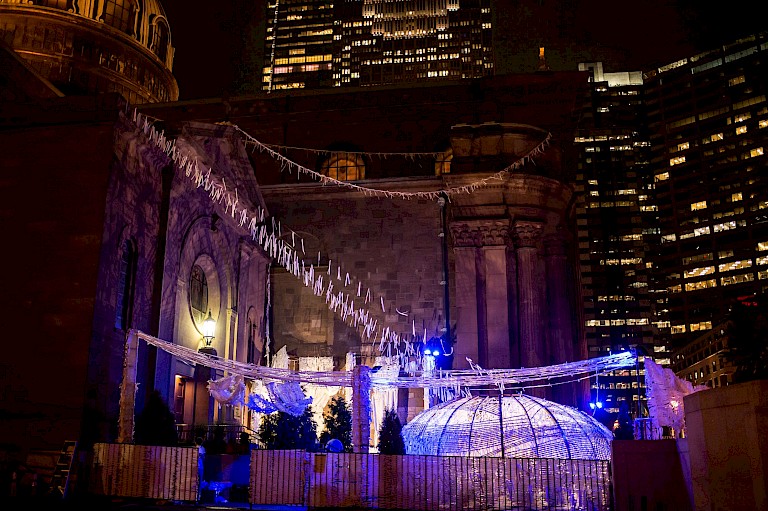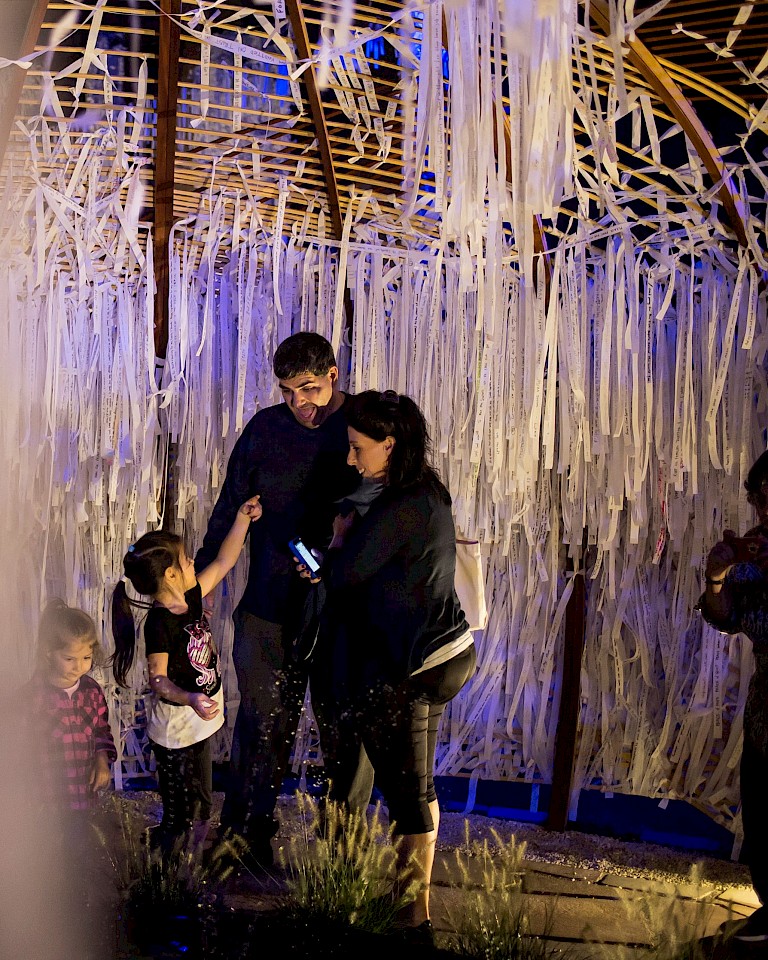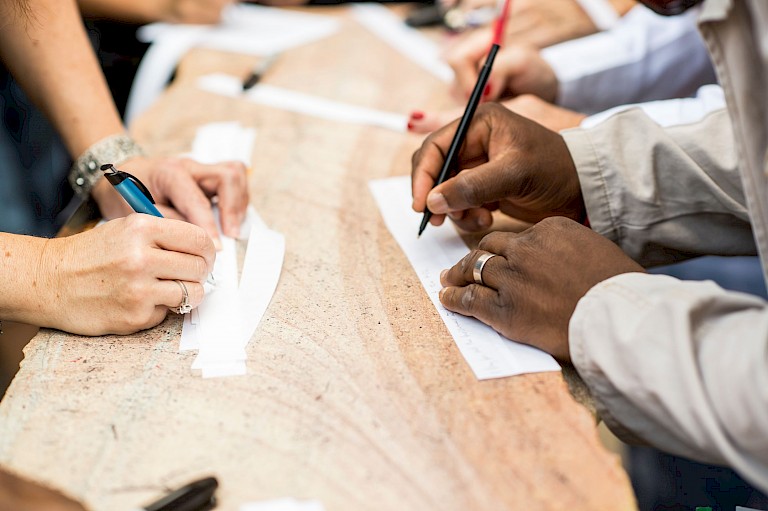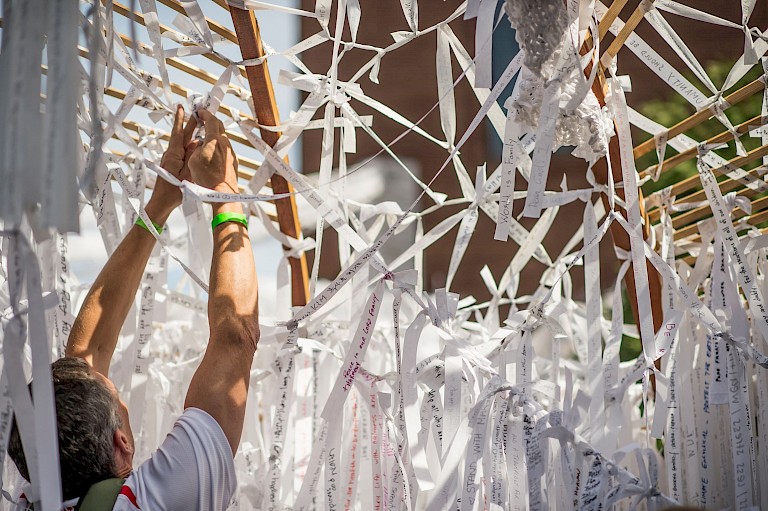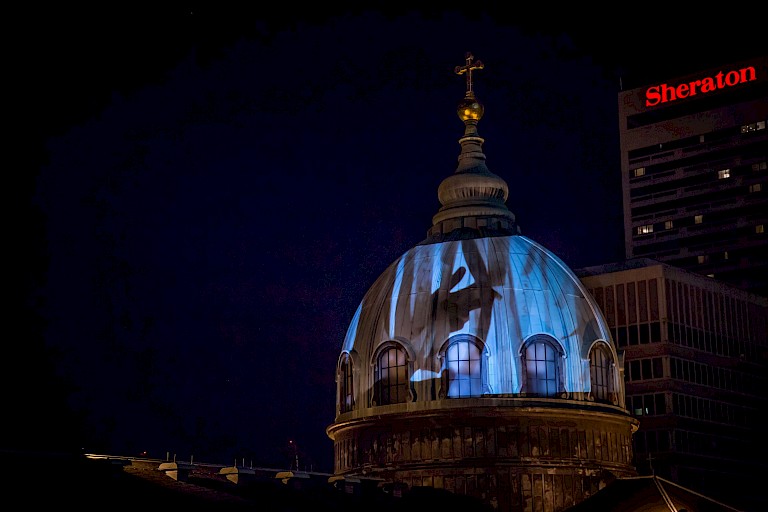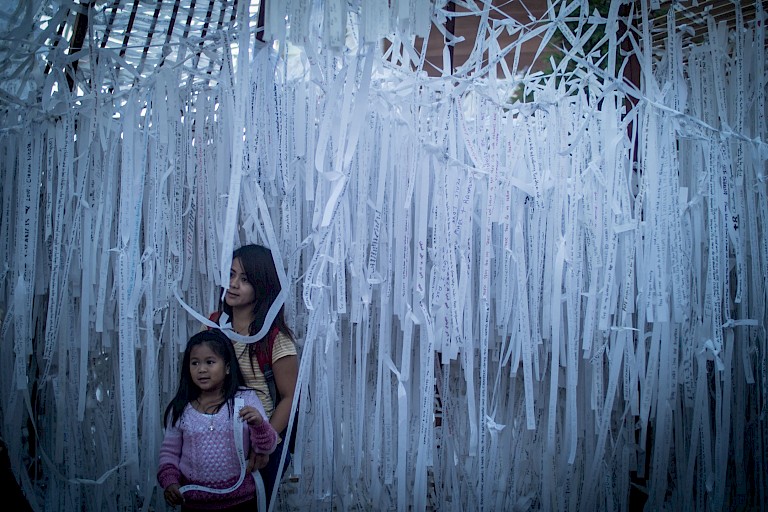



Artist Meg Saligman began with the painting as inspiration for exploring the dynamic between the individual and the collective in the context of personal struggle. Speaking of the structure itself, Saligman highlighted the function of a grotto as a space of shared prayer and communal gathering. In inviting participants to identify their own struggles, articulate them to a larger audience, and acknowledge the struggles of others, the project established a relationship between participants that symbolically enacted an essence of the painting—the act of seeking help outside oneself and the awareness that even in struggle, one is not alone. While rooted in communal efforts to alleviate homelessness, the meditations shared in Knotted Grotto ranged broadly from family tragedies to drug addition to more general well wishes.
The grotto served as a central gathering space that featured a copy of the painting, Mary, Undoer of Knots, but it was also part of a carefully crafted environment with landscaping, hand-built tables for writing, a fountain, nighttime projections, and strands of ribbons extending outward and connecting to surrounding structures. Originally envisioned as a place-based work, interest in the project grew and inquiries began coming in to the artist’s studio, asking how those who could not physically visit the work could participate. The studio created a machine to cut mural cloth and began mailing out ribbons and adding the struggles sent back to structure.
As the Pope’s visit arrived, excitement built on the ground, with the number of visitors ramping up to 20,000 per day. Speaking to the energetic quality of the site, Saligman noted that the more struggles were added, the more peaceful the site became, with the contemplative demeanor of the participants creating a palpable atmosphere. When the Pope’s procession passed the basilica, he stopped to bless the grotto, the individuals, and their struggles. All told, 150,000 individuals participated in the project.
Although the grotto was dismantled after the Pope’s visit, the struggles shared have found a new life as shelter. Following the grotto project, Saligman was commissioned by Project HOME to create a new work in one of their transitional housing communities. For that piece, Knotted Sanctuary, struggles from Knotted Grotto were dyed, rolled, and installed in the walls of the new residence, functioning as both an art installation and insulation. The burdens shared in Knotted Grotto have thus traced a cycle from painful struggle through communal catharsis to enriching a space of new beginnings.
Saligman is committed to community involvement and strove throughout the project to create pathways for participation, particularly in making it possible for people who could not travel to the site to share their struggles and be included in the work. As a result, Knotted Grotto is notable for the sheer number of participants, but also for an unforeseen quality that developed over the course of the project. Saligman noted that in leading up to the work, she “hoped that people would be connected to an energy greater than themselves.” As engagement around the project built, Saligman noted a meditative, energetic quality of the space, commenting, “I’ve never experienced something that wasn’t there being so palpable.” Speaking to the placemaking component of the work, she described Knotted Grotto as the creation of a container for holding struggle, as well as a piece that hinged upon mutuality of transformation—a shift in the environment, a transformative experience for participants, and a lasting impact on the artist as well.

